Southern Cross NR 122
The Moth sailboat Southern Cross Number 122 was constructed in 1931 by Stansbury Cramer and sailed by ‘Peggy’ Kammerman in Elizabeth City in the 1930-40s. Designed as a small racing sail boat, these moth boats became popular in North Carolina. Kammerman won multiple racing titles with her moth boat Southern Cross. Her brother-in-law Joel van Sant designed these moth boats in 1929, and himself won several racing championships. He created opportunities for local adolescents to help build these boats to prevent them from being brought into illegal activities at the time, such as bootlegging.



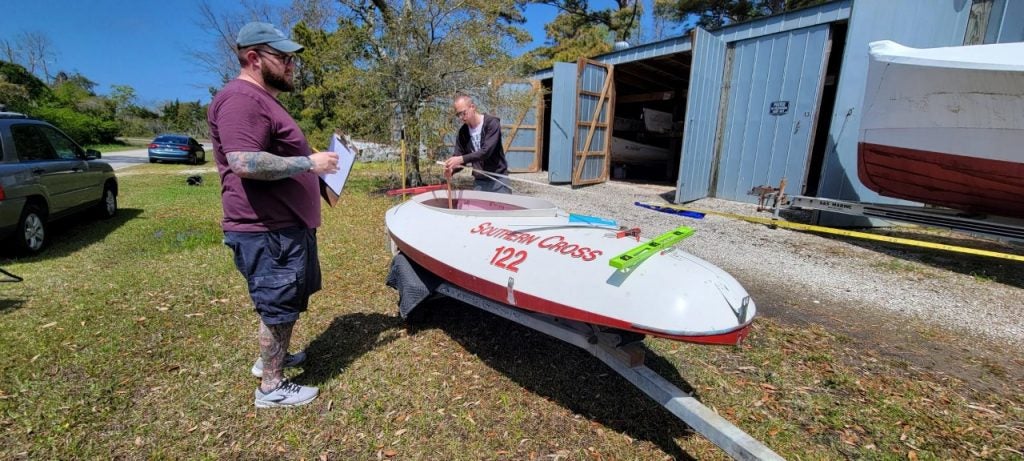
Additional Information Online
http://mid-atlanticmusings.blogspot.com/2013/09/random-moth-boating-photos-from-mid.html?m=0
https://intmothlowriders.org/designs/imca-2-2-2/
https://intmothlowriders.org/designs/imca-2-2-2-2/
https://intmothlowriders.org/designs-2-2/designs-2-2-4/
https://www.ncdcr.gov/media/1290/download
Currituck Power Skiff – ca 1930
Currituck Sound has a unique water environment. Primarily freshwater, the sound is shallower than the sounds further south inside the Outer banks. Known as the premier waterfowl area in America and a great place to fish, this region catered to wealthy sportsmen from across the globe. Citizens of Currituck are proud of their watery heritage and the handmade boats that typify their love of the sound, the rivers and creeks, and the cypress swamps of Currituck County.
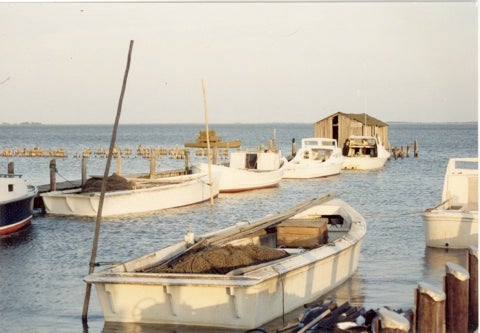
While many of the old-timers used shad boats in the southern reaches of Currituck sound, many more used locally built flat-bottom wooden skiffs. These purpose-designed boats could travel the shallow waters of the sound without fear of grounding. These skiffs have been powered by oars, sails, inboard, and outboard motors. But most importantly, they can be poled in extremely tight waters.
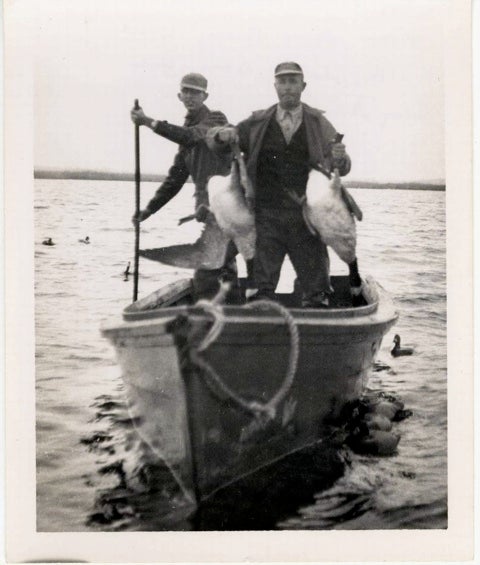
This Currituck County power skiff, built around 1930, is typical of the hand-crafted, shallow water boats common in the waters of Currituck County. Preserved at the Beaufort Maritime Museum’s boatshed, this skiff had an inboard motor at one time. The aftmost thwart still mounts a handmade console with openings for various instruments, and probably for the wheel. The forward thwart was fitted for a single mast. This skiff displayed no sign of oarlocks. However, it had a platform aft that extended past the transom. The author’s assumption is this was a platform for poling.
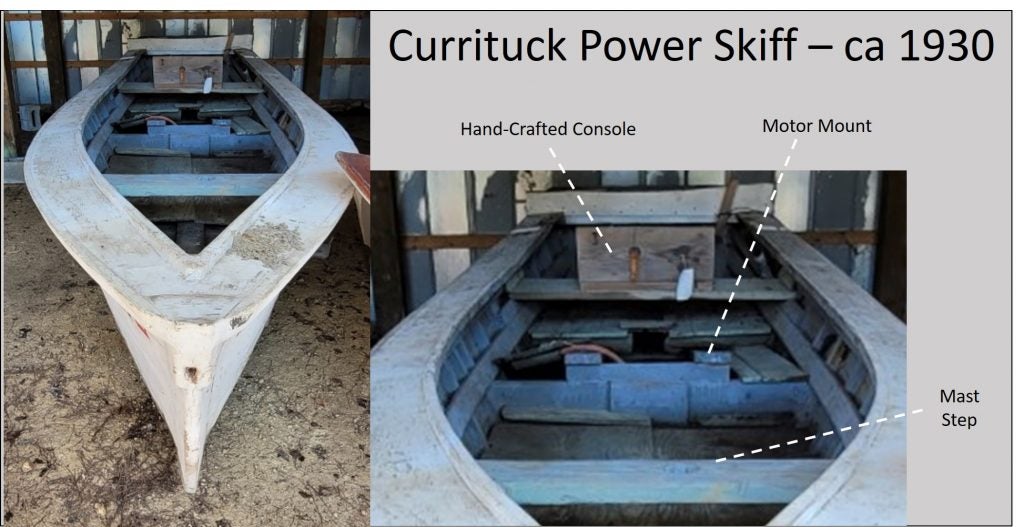
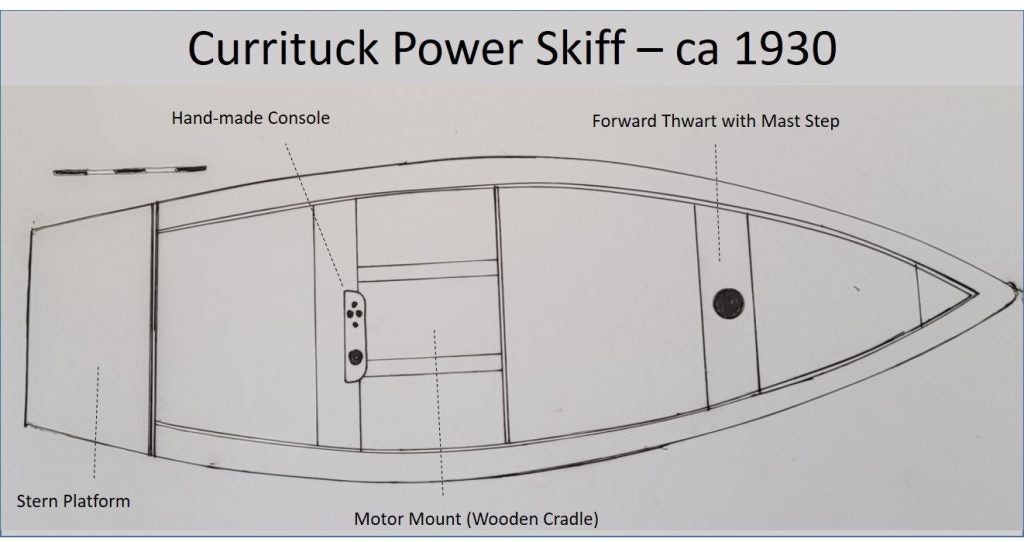
Additional Information Online
Boats of Currituck: An Analysis of Six Watercraft from the Whalehead Preservation Trust Collection
East Carolina University Program in Maritime Studies, Research Report No. 23 (2016)
Edited by Nathan Richards and David J. Stewart
https://maritimestudies.ecu.edu/wp-content/pv-uploads/sites/92/2020/01/ecur023.pdf
Currituck Maritime Museum
https://www.visitcurrituck.com/places/currituck-maritime-museum/
Boats A Way of Life Along Currituck Sound
NC Angler May 16, 2006
https://www.ncangler.com/threads/boats-a-way-of-life-along-currituck-sound.1409/
The Historic Boats of Currituck (YouTube Video)
By Currituck Outer Banks
Currituck Sound Skiffs
By Glen P
http://skiffrepublic.com/currituck-sound-skiffs/
Vintage boats from Currituck County’s glory days of duck hunting displayed in new museum
By Jeff Hampton For The Virginia-Pilot. Jun 06, 2021
https://www.pilotonline.com/news/vp-nw-boat-museum-20210606-35xcequqvfckleysckplosxztu-story.html
“Apba”
The Apba is a 1971 class-C racing hydroplane, designed by Nyles Sternad and built by Jim Zimmerman and Butch Ott. It was used recreationally during the 1970s on lakes in the Charlotte area. Apba used a 30 h.p. Yamaha engine, and is 3.9m in length with a 3.04m beam. Hydroplanes were originally developed in the 1920s, with the designs becoming somewhat standardized by the 1950s. A distinctive feature in the design of the hydroplane is the craft’s reliance on life while traveling at high speeds, rather than buoyancy. Primarily used for motoboat racing, hydroplanes have close to the totality of their hulls above the water when performing at their top speeds.
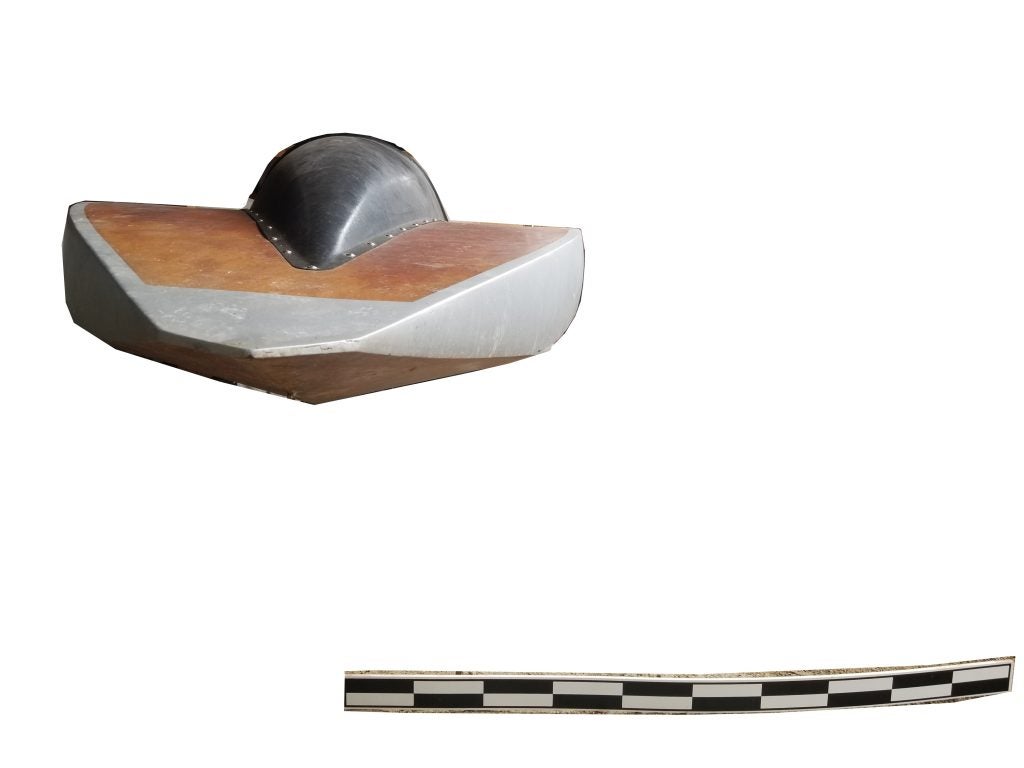
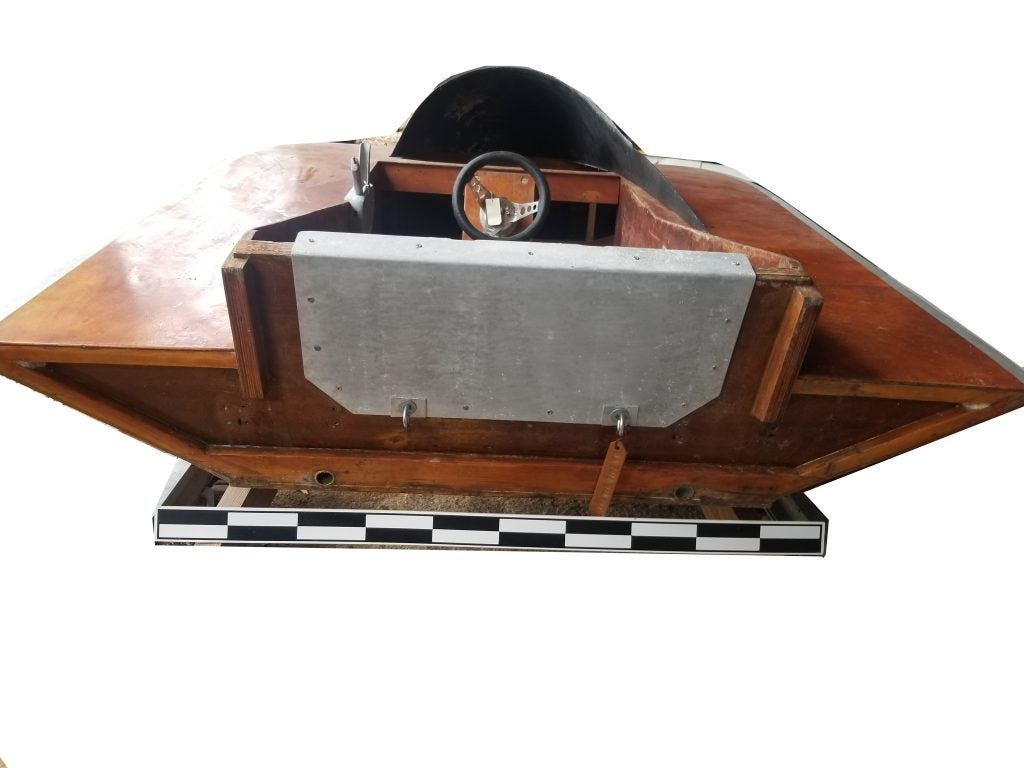
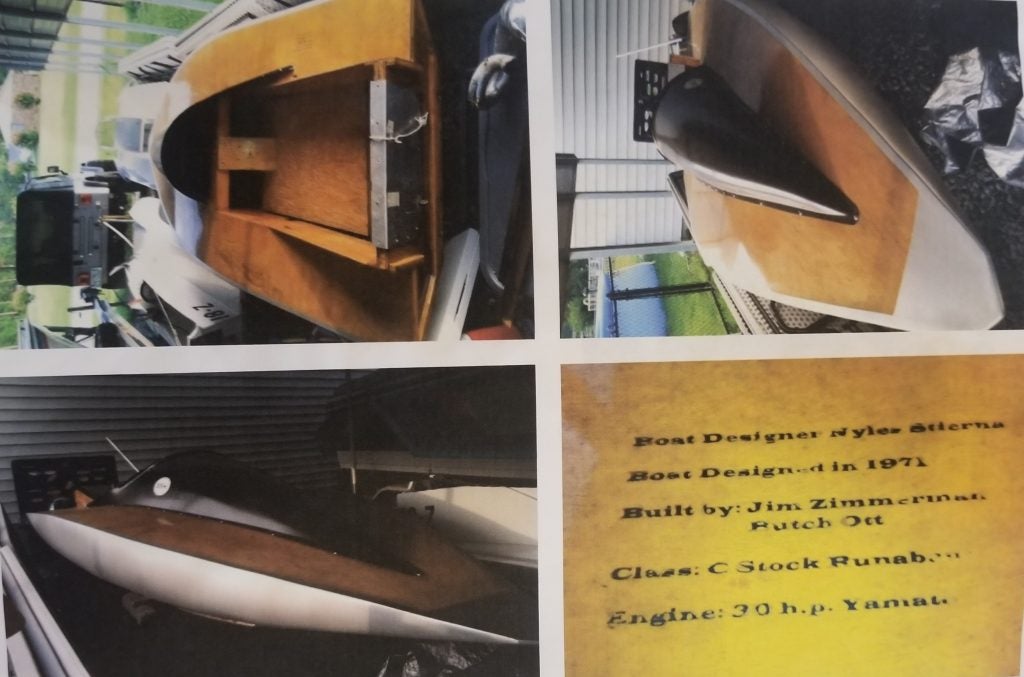
Hydroplane racing (1955)
Apba Baseline Offsets
25cm (start of stern on baseline) – 142.5cm
65cm – 147cm
95cm – 149cm
125cm – 151cm
155cm – 152cm
175cm – 152.5cm
190cm – 146.5cm
200cm – 143cm
220cm – 139cm
235cm – 133.5cm
255cm – 129cm
270cm – 113.5cm
280cm – 109cm
290cm – 107cm
300cm – 94cm
320cm – 77cm
340cm – 61cm
360cm – 40cm
385cm – 18.5cm
390cm – 0cm